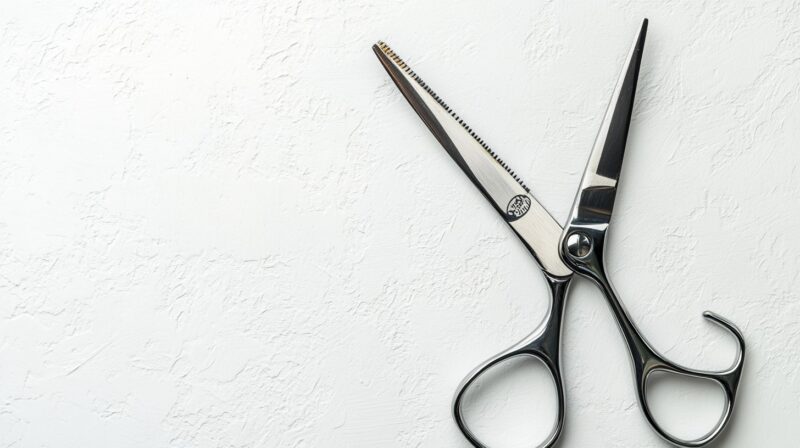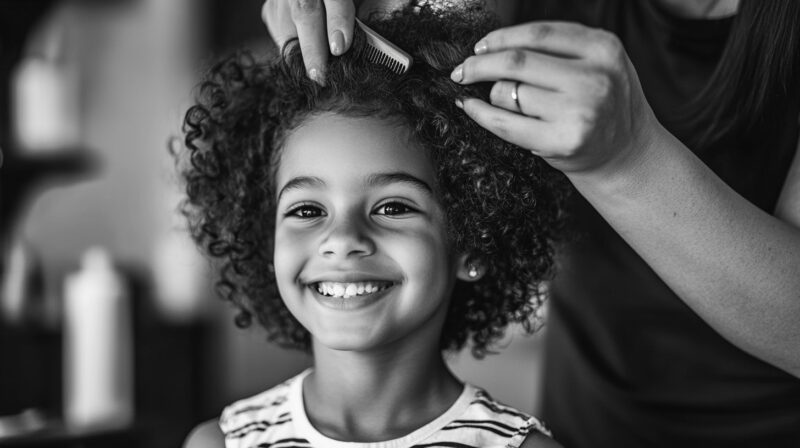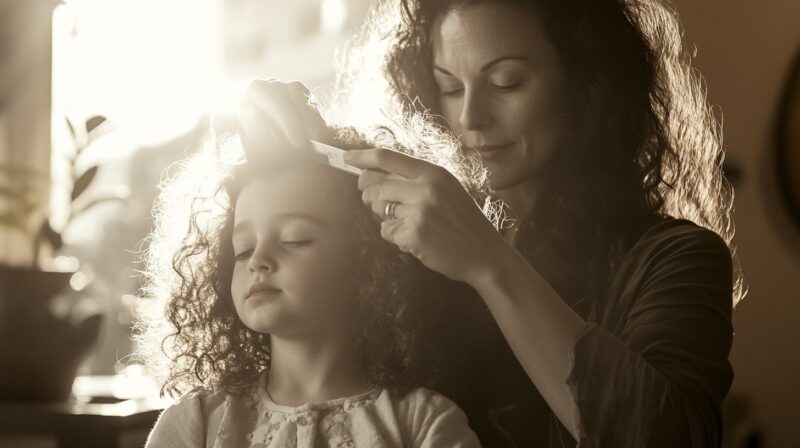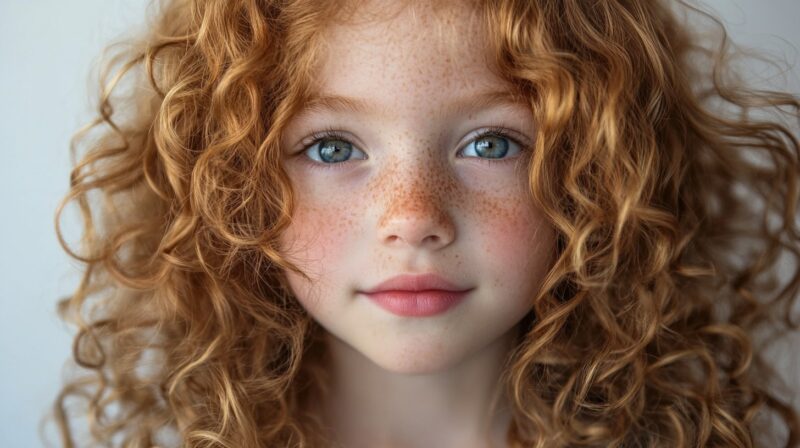Maintaining curly hair for kids can be a delicate process that requires extra attention and care. Parents often face challenges when cutting their children’s curly hair at home, as curly textures behave differently than straight hair.
Without the right approach, it can lead to uneven results, frizz, or even damage to the curls.
However, with patience and the right techniques, you can achieve a beautiful, manageable cut for your child’s curls at home.
Preparation Before Cutting
The first step to a successful haircut for curly-haired kids is preparation.
Selecting the right tools is critical to avoid damaging the hair.
Haircutting scissors, rather than regular household scissors, should be used to ensure a clean cut without creating split ends.
Duckbill clips can help section off hair, making it easier to manage and cut in smaller portions.
For parents aiming for shorter hairstyles, buzzers with guards can be useful to achieve an even cut while maintaining safety.
The setting where you cut your child’s hair is just as important.
Cutting hair in a bathtub or other slippery areas can be dangerous, as it increases the chance of slips and accidents.
Instead, choose a flat, well-lit area, and use a trash bag or floor cover to catch hair clippings.
That doesn’t only simplify the cleanup but also helps maintain a clear workspace, allowing you to focus on the haircut itself.

Detangling and Hair Type Considerations
Before beginning a haircut, it’s essential to first understand the unique characteristics of your child’s specific curl type.
| Curl Type | Description |
|---|---|
| Loose Waves (2A) | Soft waves. Light layering, avoid over-layering. |
| Defined Waves (2B) | ‘S’ shape waves. Wet cut for control, avoid thinning. |
| Wavy-Curly (2C) | Defined curls and waves. Wet cut, avoid texturizing. |
| Loose Curls (3A) | Loose curls. Dry or wet cut, watch for shrinkage. |
| Tight Curls (3B) | Springy curls. Detangle, wet cut for control. |
| Coiled Curls (3C) | Densely packed curls. Wet cut, avoid volume loss. |
| Tightly Coiled (4A) | Small curls, shrink when dry. Wet cut for accuracy. |
| Kinky-Coily (4B) | Tight zig-zag curls. Wet cut, expect shrinkage. |
| Tightly Packed Coils (4C) | Delicate coils. Wet cut, careful detangling needed. |
Detangling Considerations
Detangling curly hair before cutting is essential to avoid snags and unnecessary discomfort for your child.
Always use a gentle, wide-tooth comb or your fingers to carefully work through knots.
Wetting the hair and using a detangling spray can make this process smoother, ensuring that the curls remain intact throughout.
Cutting Techniques for Curly Hair

Now let us address some of the cutting techniques you can use in this case.
Avoiding Blunt Cuts
When cutting curly hair, avoiding blunt cuts is essential. Blunt edges can interfere with the natural curl pattern, leading to a less flattering shape.
The lack of movement in blunt cuts can cause the hair to look heavy and blocky, taking away from the dynamic flow that curls need to look their best.
Instead, stylists should opt for layered cuts that enhance the natural movement of the curls.
Layers help the curls to fall more naturally and reduce bulkiness, creating a balanced shape that frames the face and body better.
Opting for Layered Cuts
Layering is one of the most effective techniques for curly hair. It prevents the dreaded “pyramid effect” that often occurs when curly hair is cut bluntly or with no layers.
The pyramid effect leaves hair wide at the bottom and flat at the top, resulting in an unbalanced silhouette.
Layers help distribute the curls evenly throughout the hair, allowing for better volume and bounce.

Sectioning for Precision
Sectioning is another essential technique when cutting curly hair.
Proper sectioning allows for better control over the cut and ensures that each curl is treated individually, preventing any mistakes that could alter the final shape.
To begin, divide the hair into small, manageable sections, starting from the bottom and working your way up.
The method ensures that the cut is even and consistent throughout the entire head.
When cutting each section, it’s crucial to hold the hair loosely, avoiding any tight pulling that could stretch and distort the curl pattern.
Glide Cutting for Control
When cutting curly hair, it’s important to glide the scissors through the hair rather than making quick, forceful snips.
This method, often called “glide cutting,” helps maintain control over the shape and ensures a more seamless blend of the curls.
Cutting small amounts at a time is also important, as it allows for adjustments as needed and prevents cutting too much off in one go.
Since curls naturally spring back, trimming cautiously and in small increments helps preserve the desired length while shaping the curls effectively.

Wet vs. Dry Cutting
Whether to cut curly hair dry or wet depends on the stylist’s technique, the hair type, and the desired result.
Dry cutting has become more popular in recent years because it allows stylists to see the natural curl pattern as they work.
The method minimizes the risk of shrinkage, which often occurs when wet hair dries and results in a shorter appearance than expected.
However, cutting wet hair can offer more precision and control, especially for more intricate styles or when dealing with unruly curls.
Wet cutting also makes it easier to manage thick, dense hair, giving the stylist more control during the process.
Regardless of the method, it’s always best to cut less than anticipated since curls tend to spring back after being cut.
Post-Haircut Care and Styling

After the haircut, caring for your child’s curls is just as important as the cut itself. Curly hair tends to be more prone to dryness, so it’s vital to use the right products to prevent frizz.
Styling creams and leave-in conditioners specifically designed for curly hair can help retain moisture and define curls.
These products form a protective barrier, locking in hydration and preventing the hair from becoming frizzy or unruly.
Whenever possible, allow the hair to air-dry. Air-drying preserves the natural curl structure and reduces the risk of frizz.
If you need to use a blow dryer, attach a diffuser to minimize heat damage and distribute the air more gently across the curls.
Regular trims every four to six months are crucial to maintain healthy curls and prevent split ends. Consistent maintenance will keep the hair looking its best and reduce the chances of frizz and breakage.
When it comes to styling tools and accessories, opt for heat-free options whenever possible. Satin pillowcases, scrunchies, and wide-tooth combs are great for protecting curls during sleep or throughout the day.
Heat styling should be minimized to avoid damage, but if it’s necessary, always use heat protectant sprays to shield the curls from excessive damage.
The Bottom Line
Embrace the beauty of your child’s natural curls and focus on maintaining their health through regular trims and proper care.
With patience and attention to detail, managing curly hair at home becomes easier and more rewarding.

